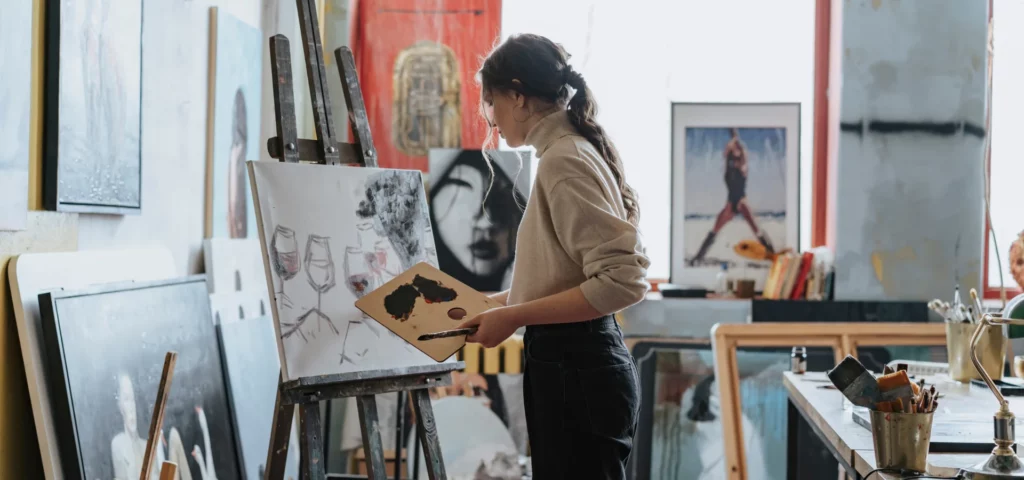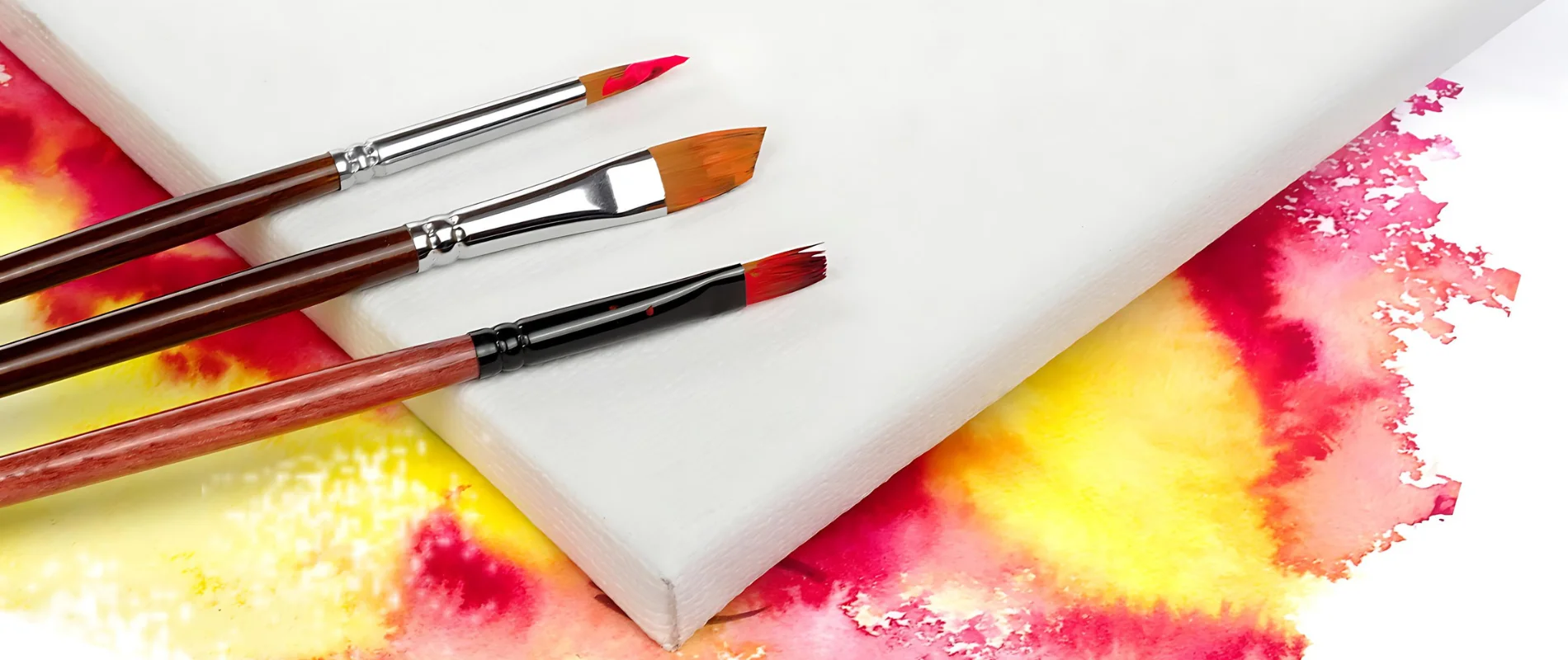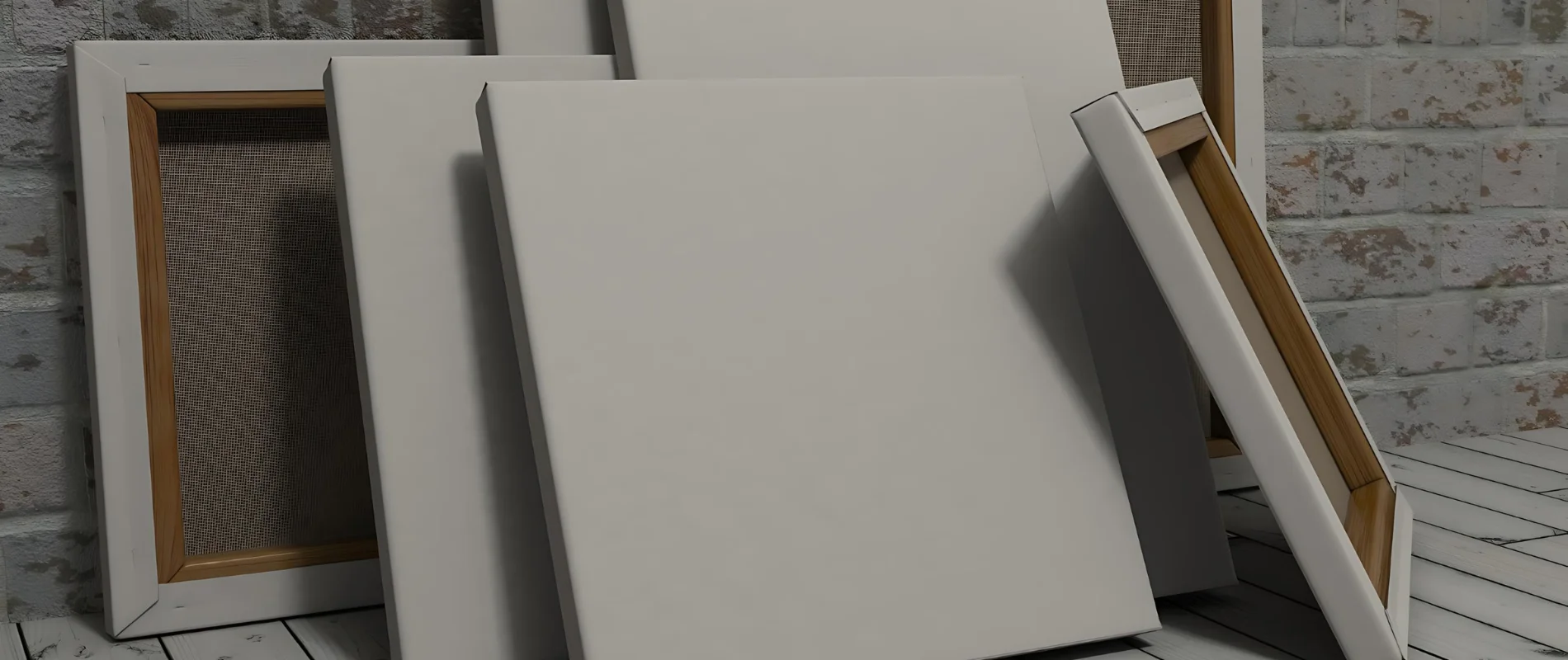
Uncover Stretched Canvas
Let’s dive into the artistic wonderland of stretched canvas, the unsung hero of paintings, portraits, and masterpieces. It’s time to discover what makes this canvas tick and why artists swoon over it like it’s the latest episode of a beloved drama series.
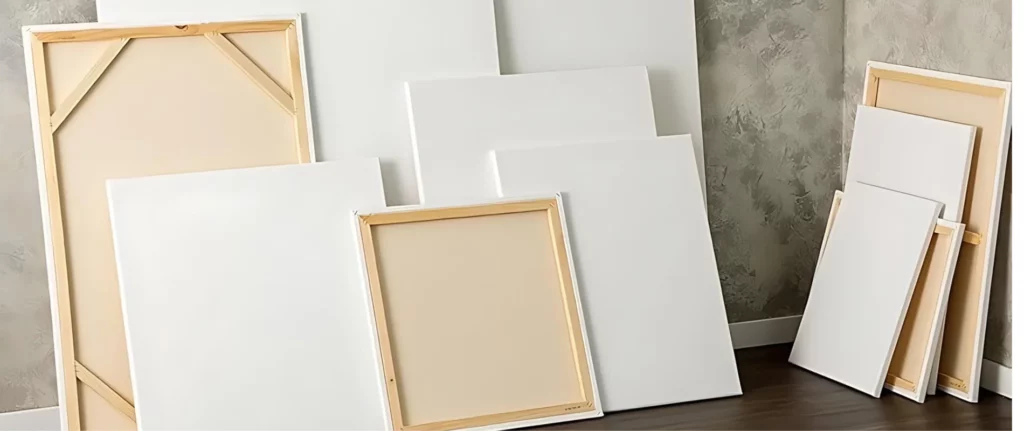
What is a Stretched Canvas?
A stretched canvas is art’s equivalent of a theatrical stage (My Art Shop). It’s a fabric, often cotton or linen, pulled taut over a wooden frame with the precision of a cat on a hot tin roof. This magical assembly creates a perfect surface for your creative genius to strut its stuff.
The structure, or what some might call the skeleton, of a stretched canvas consists of wooden supports. These are no flimsy stilts; they’re engineered to provide sturdy backing for your artwork. For larger canvases, additional horizontal bars run through the middle to maintain frame stability (Milan Art Institute).
Benefits of Using Stretched Canvas
Why do artists adore stretched canvases? The reasons are as numerous as the tubes of paint in a studio, but here are the biggies:
- Stable Surface: Unlike wooden panels, which can warp and crack like a poorly-made pie crust, a stretched canvas offers a stable and reliable surface. This makes it less likely to distort under the onslaught of artistic fervor and environmental changes (Jackson’s Art Blog).
- Portability: Stretched canvases replaced wooden panels during the Renaissance because they are easier to carry around. If it’s good enough for the Renaissance painters, it’s good enough for you.
- Pre-Primed Goodness: Most stretched canvases come pre-primed with gesso. This means they’re ready for your painting antics right out of the box. Of course, for those who are texture aficionados, additional primer layers can be applied to suit specific mediums (My Art Shop).
- Versatility: Whether you lean towards oil paints, acrylics, or mixed media creations, stretched canvas is the all-embracing friend that doesn’t judge your artistic choices. Its surface is suitable for a variety of mediums, offering the flexibility to switch things up on a whim.
| Aspect | Benefit |
|---|---|
| Stability | Less prone to warping and cracking |
| Portability | Easier to transport, ideal for large works |
| Pre-Primed | Ready for painting, customizable with extra primer |
| Versatility | Suitable for various painting mediums |
Stretched Canvas Options
Stretched canvas is like your trusty, ready-to-go companion, always prepped for action. Think of it as a 3D friend that can hang without a frame—perfect for when you’re too lazy to hunt for one (My Art Shop). This category boasts famous brands like Mont Marte, Prime Art, Fredrix, and more, giving you a smorgasbord of choices to compare in terms of pricing, sizes, and quality (MyArtShop).
Let’s break down the basic perks into a handy table:
| Brand | Sizes Available | Priming |
|---|---|---|
| Mont Marte | Various | Pre-primed |
| Prime Art | Various | Pre-primed |
| Fredrix | Various | Pre-primed |
Stretched canvases are the social butterflies of the canvas world. Sturdier than their panel counterparts, they fit seamlessly into any space, whether that’s a gallery wall or your grandma’s living room. Choosing the right canvas is like choosing the right sidekick—once you find the perfect fit, the sky’s the limit for your creative adventures.
Exploring Canvas Types
In the world of art, choosing the right canvas can be as critical as selecting your muse. Artists, let’s unmask the secrets behind different canvas types and help you find the perfect match for your masterpiece.
Box Canvas vs. Stretched Canvas
First up, let’s explore two popular options: box canvas and stretched canvas. They’re both great choices depending on what you’re painting and where you plan to display it.
Box Canvas: Think of box canvas as your chubby, 3D buddy that’s always ready to hang out. It’s stretched over a thick, box-like frame that can proudly stand alone without additional support. Box canvas is perfect for pieces that command attention and add a touch of depth to your artwork.
Stretched Canvas: On the other hand, stretched canvas is like its slimmer cousin. While still offering a 3D effect, it is stretched over a thinner frame. It might need an extra touch of class, perhaps a frame, to be wall-ready.
To make things even clearer, check out this quick comparison:
| Feature | Box Canvas | Stretched Canvas |
|---|---|---|
| Frame Thickness | Thick, box-like | Thin |
| Standalone Display | Yes | Sometimes |
| Framing Needed | No | Often yes |
| Ideal Use | Bold, standalone pieces | Classic, framed works |
The Art of Priming Canvas
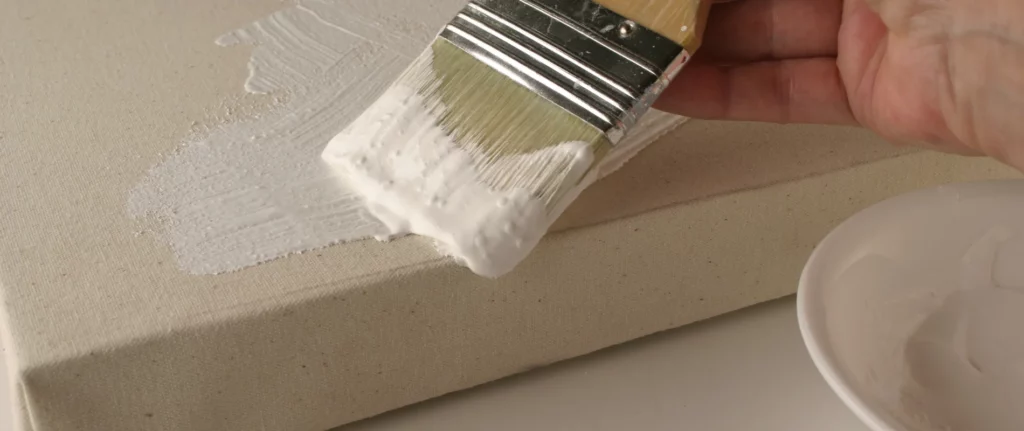
Before your masterpiece leaps off the canvas, it needs a solid foundation to ensure longevity and vibrant colors. Priming your canvas is akin to giving your painting surface a spa day, prepping it for the creative magnificence to come. Let’s dive into the world of priming canvases and uncover why it’s essential and the methods to perfect this practice.
Importance of Priming
Priming a canvas isn’t just a fancy step in your art process; it plays a key role in the life and vibrancy of your artwork. Adding a coat of primer, like acrylic gesso, creates a barrier between the raw canvas and your paint. This barrier ensures better paint adherence and keeps the canvas from gobbling up your precious pigments, leaving your colors looking bold and beautiful.
Your primer of choice, be it acrylic gesso, clear acrylic medium, or traditional hydes glue and oil priming white, transforms your blank canvas into a masterpiece-ready surface. Gesso, for instance, provides a waterproof layer, making paint application smooth and even. It also shields the canvas from acidic paint corrosion, extending the lifespan of your artwork (Jerry’s Retail Stores).
Methods and Techniques
The process of priming might seem daunting, but fear not! With a little know-how, you can become a priming pro. Here are a couple of popular techniques:
- Center Out Technique: Start by applying the primer from the center of the canvas using horizontal and vertical strokes. Gradually spread the primer outward towards the edges. This technique ensures an even coating without inconsistencies (Jerry’s Retail Stores).
- Corner Squares Technique: Brush small squares following the weave of the canvas. This method helps create a uniform layer, perfect for those who love a bit more structure in their priming process (Jerry’s Retail Stores).
Timing is everything when it comes to priming. Since gesso dries faster than a gossip on the art scene, working quickly and efficiently is essential. Apply each coat evenly and lightly sand it down before adding the next. By doing so, you’ll create a smooth, flawless painting surface.
| Priming Techniques | Description |
|---|---|
| Center Out Technique | Start in the center with horizontal & vertical strokes, spread outwards |
| Corner Squares Technique | Brush on small squares following the weave for uniform layering |
Advanced options for the adventurous include using clear acrylic medium, which dries transparent and matte, or pre-tinted gesso to add a hint of color to your groundwork. If you’re feeling extra fancy, give your canvas some texture using acrylic modeling paste. For expert advice on these more intricate techniques, consider chatting with the wizened sages at your local art supply store (Jerry’s Retail Stores).
To sum up, properly priming your canvas is fundamental for the ultimate painting experience. Whether you are working with stretched canvas or any other canvas type, setting the stage right will let your creativity shine while prolonging the artwork’s life.
Different Priming Options
Priming options vary depending on the type of paint and desired finish. Here are the most common types of priming and their features:
| Priming Type | Suitable For | Key Benefits | Description |
|---|---|---|---|
| Acrylic Gesso | Acrylic and Oil Paint | Quick-drying, white or colored | Acrylic gesso prepares the canvas by creating a slightly textured surface that grips the paint well. Many artists prefer it for its quick drying time and versatility. |
| Oil Primer | Oil Paint | Smooth finish, traditional | Oil primer provides a slick, smooth surface ideal for oil paints. It helps avoid dull patches and ensures the colors stand out. As it dries, it stretches the canvas, keeping it taut (Winsor & Newton). |
| Pre-primed Canvas | Acrylic and Oil Paint | Convenience, ready to use | Pre-primed canvases like the Strathmore 300 Series come ready to paint, saving you time. These canvases are typically triple-primed, ensuring consistent quality. |
For those who enjoy the meditative process of preparing their canvas, acrylic gesso is a popular choice. It can be applied in multiple layers, sanded in between for a smoother finish, or left with a slight texture to give the painting a unique feel.
Oil painting enthusiasts might prefer using an oil primer to achieve a more traditional, glossy surface. This primer type requires a bit more drying time but delivers a surface that’s perfect for thin glazes and detailed brushwork.
Alternatively, pre-primed canvases offer the convenience of skipping the priming process entirely. They are a great option for artists who value convenience and consistency. They also come in canvas panels, which are fantastic for practice or studies.
Whether you prefer the control of priming yourself or the ease of pre-primed canvases, the essential takeaway is to use a primed surface. Your painting journey deserves nothing less.
Canvas Weight and Material
Let’s dive into the nitty-gritty of canvases. It’s time to get up close and personal with our good friends Cotton and Linen, and uncover the mysteries of canvas weight.
Cotton vs. Linen Canvas
When it comes to choosing the right material for your canvas for painting, it’s an age-old battle between Cotton and Linen. Each has its own quirks and qualities, like a pair of eccentric artists in a never-ending rivalry.
Cotton Canvas:
- Economical: If Cotton were a person, it would be the frugal friend who knows how to stretch a dollar (and itself, quite literally!). Cotton is budget-friendly and widely available.
- Less Durable: Cotton’s Achilles heel is its shorter fibers, which make it more prone to tearing. This material requires a little extra TLC.
- Smooth Surface: Cotton tends to have a smoother finish, giving artists a nice, even surface to work their magic on.
Linen Canvas:
- More Expensive: Linen likes the finer things in life. Due to the labor-intensive process of extracting flax fibers and its high demand, Linen is pricier.
- Super Strong: Linen’s longer fibers give it impressive durability. It’s like the Hercules of canvases.
- Smooth and Stiff: Linen provides a stiffer and smoother surface, ideal for detailed and long-lasting artworks (Jackson’s Art Blog).
- High Status: Linen holds a special place in the hearts of art collectors and artists alike, making it a preferred choice for masterpiece-worthy works.
Understanding Canvas Weight
Canvas weight is like the canvas’ gym membership – it’s all about the fabric’s strength, determined by thread thickness and weave tightness (Jackson’s Art). The more muscle (weight) it has, the more tension it can handle without tearing, which is crucial for those grand, daring artworks.
| Canvas Material | Weight (oz) | Strength |
|---|---|---|
| Cotton | 7-9 oz | Moderate |
| Linen | 11-14 oz | High |
Key Takeaways:
- Heavier Canvases: Heavier-weight canvases can withstand greater tension, making them ideal for large stretched canvases.
- Thread Thickness: The thicker the thread, the heavier the canvas, resulting in a sturdier fabric.
- Weave Tightness: A tighter weave adds to the canvas’ ability to hold tension, ensuring your masterpiece stays intact.
By understanding the differences between Cotton and Linen, as well as the importance of canvas weight, artists can make informed decisions that suit their specific painting needs. Enjoy your artistic journey, and may your canvases be ever strong and durable!
Understanding Canvas Texture
Texture plays a crucial role in the final look and feel of your artwork. There are varying levels of coarseness and smoothness to consider when choosing your canvas.
- Coarse Texture: Ideal for bold, expressive brushstrokes and impasto techniques. It adds a tactile quality to the artwork.
- Smooth Texture: Prefers fine detail work, such as portraits and realism. Nearly undetected texture provides a seamless finish for intricate paintings (Milan Art Institute).
When choosing a canvas, artists must consider their painting style and the desired outcome. A good understanding of texture and material will ensure that every brushstroke is perfectly supported, allowing the creation of a true masterpiece.
The Anatomy of Stretched Canvases
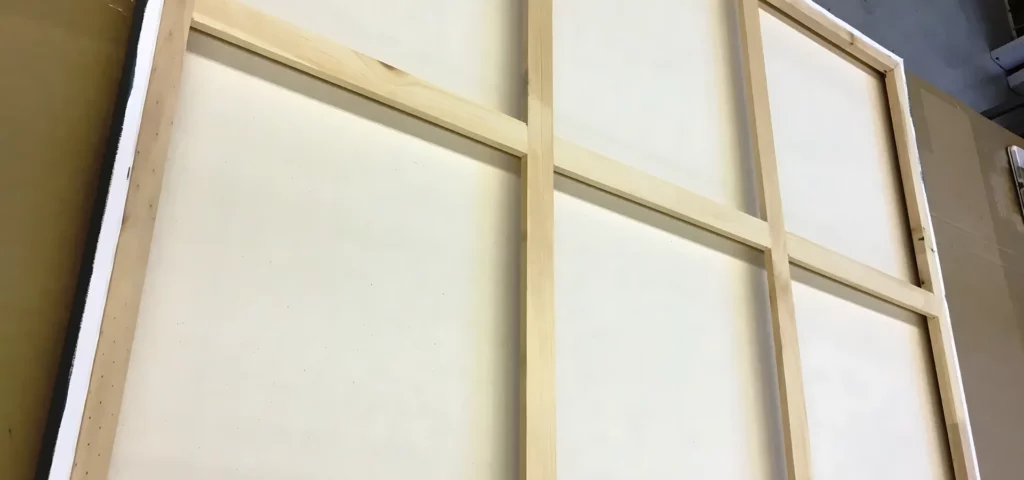
An artist’s canvas isn’t just a flat piece of cloth; it has a sturdy, wooden skeleton beneath the surface, and its depth plays a crucial role in both its appearance and stability.
Wooden Structure Beneath
Beneath every spectacular masterpiece on a stretched canvas is a simple, yet robust wooden frame. This wooden skeleton, often referred to as stretcher bars, provides the necessary support to keep the canvas taut and ready for your creative capers. Larger canvases may have horizontal crossbars running through the center, ensuring stability and preventing any wobbling behavior (Milan Art Institute).
| Feature | Benefit |
|---|---|
| Stretcher Bars | Keeps canvas taut |
| Horizontal Crossbars | Adds stability, especially for larger canvases |
Think of the wooden structure as the backbone for your canvas. Without it, the canvas would flop around like a fish out of water, making your artistic adventures a lot less fun.
Significance of Canvas Depth
Canvas depth might not sound so thrilling at first, but it can significantly impact both the aesthetic and practical aspects of your work. Standard stretched canvases are typically thinner and might need a frame for display, adding to your expenses but also enhancing the artwork’s presence.
On the flip side, box canvases—also known as gallery-wrapped canvases—have a deeper, box-like frame, allowing them to proudly stand alone or hang without the need for additional framing. These are perfect for artists who prefer to let their work speak for itself, no extra frills needed.
| Canvas Type | Depth | Additional Framing |
|---|---|---|
| Standard Stretched Canvas | Thinner | Often required |
| Box Canvas (Gallery-Wrapped) | Deeper | Not needed |
The depth also plays a crucial function in handling specific paints and primers. Pre-primed canvases, such as the Strathmore 300 Series Stretched Canvas, offer a convenient option if you’re not up for priming yourself. These canvases are 100% cotton and triple-primed, so they’re ready for action right out of the package.
Choosing the Perfect Canvas
Quality Canvas Brands
In the world of painting, the quality of your canvas can make all the difference between a masterpiece and a “meh” piece. Below, we’ll unveil two top-notch brands that have set the stage for artists everywhere.
Selecting the ideal canvas for your artistic masterpieces can be as challenging as deciding whether pineapple belongs on pizza (it does, fight me). However, we’re here to make your decision a bit easier with a detailed look at two popular options: Box Canvas Artboard Professional and Stretched Canvas.
Box Canvas Artboard Professional
The Box Canvas Artboard Professional is like the Swiss Army knife of canvases—versatile and ready for anything. These bad boys offer 380gsm of pure, 100% cotton joy, triple primed with acrylic gesso (My Art Shop). This priming process makes them suitable for a variety of painting techniques, including oils and acrylics.
Available in sizes ranging from 4″ x 4″ to 12″ x 12″, these artboards cater to both your petite sketch ideas and grand Monet-esque dreams (My Art Shop). Here’s a quick glance at the numerical data for your convenience:
If your mood fluctuates as wildly as an Instagram trend, Box Canvas Artboard Professional has got you covered for all your artistic whims and fancies.
Mont Marte Professional Stretched Canvas
Mont Marte isn’t just a brand; it’s a statement. Their Professional Stretched Canvases are the epitome of sophistication and utility. These canvases are triple-coated with a universal primer, making them ready to use right out of the box. No more waiting or prepping—just pure, unadulterated creativity (My Art Shop).
Made from acid-free, 100% cotton duck fabric, these canvases ensure longevity, resisting the yellowing that can happen over time. Weighing in at 380gsm, they strike a perfect balance between sturdiness and flexibility. Not to mention, they come equipped with a bracing and wooden stretcher key for sizes over 60cm, adding stability and support to your artistic endeavors.
The pine wood frame and kiln-dried stretcher bars prevent warping, letting you focus on what you do best—painting!
| Feature | Specification |
|---|---|
| Material | 100% Cotton Duck |
| Weight | 380gsm |
| Coating | Triple-Coated Universal Primer |
| Frame | Pine Wood |
| Sizes Available | 16″ x 16″ to 36″ x 36″ |
These canvases are suitable for both oil and acrylic paints, providing flexibility in your choice of medium. Their design includes mitered corners and double-row back stapling, adding a professional finish to your artwork.
Prime Art Gallery Black Series Canvas
If Mont Marte is the gentle artisan, Prime Art Gallery Black Series Canvas is the bold maverick. These canvases bring a touch of elegance to your craft while ensuring that your artwork stands out.
Designed with a professional touch, the Black Series Canvas is made for artists who aren’t afraid to push boundaries and dare to be different. They exude a sense of drama and intrigue, making them perfect for high-contrast, impactful pieces.
Prime Art Gallery Black Series Canvases offer:
- Durability: Built to withstand the toughest artistic adventures.
- Versatility: Suitable for various painting styles and techniques.
- Premium Look: Ensures a gallery-worthy appearance.
Using these brands, artists can craft their visions with confidence, knowing they’re supported by top-quality materials. Whether you’re painting for passion or profession, Mont Marte and Prime Art Gallery have got you covered.
